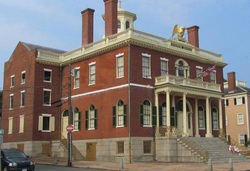
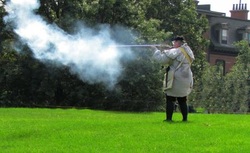
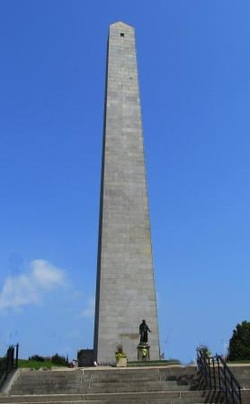
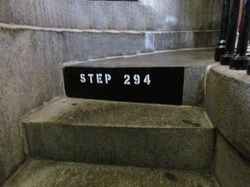
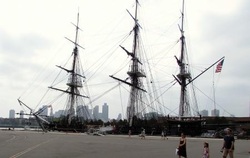
 _To follow history today, we drove into Boston. After paying a toll to cross one of the bridges into the city, we made our way down to the Naval Yard and the location of where Paul Revere started his ride to warn the patriots. It’s also the location for the Bunker Hill monument. On the morning of June 17, 1775 an event that no one would have thought would happen, happened. It all started when King George III instigated a new series of taxes on the Colonists and the results came down to what is known as the “Boston Tea Party”. With the rights of the colonists being squeezed the thought of tossing 342 chests of tea, valued at over $1 million in today’s currency came to reality…it was done and the line was drawn. Getting back to June, 1775, the garrison commanders noticed that a change had developed over night on Bunker Hill. “Late in the evening of June 16, William Prescott passed over Bunker Hill and led 1,200 men to Breed’s Hill and, Under the direction of Richard Gridley, built an earthen fort.” As the sun rose that morning the commanders knew things would never be the same again. After making preparations for attack, the British garrison landed on the shores of Charleston and marched forward to Bunker Hill.  _It took 3 different charges before the Kings army finally routed the militia but it didn’t come without a huge loss to the regulars. As they made their first attack on the “Hill”, they started noticing the decline from 2,200 men to less than 1,000 after the last surge. Well anyway, while taking a tour with the ranger we were not only learning more about Bunker Hill history but were also walking the walk. Bunker Hill is now surrounded by million dollar “Brownstones” (townhouses) but Bunker Hill still stands on its own. Standing tall at the crest of the Hill is the granite obelisk that was completed in 1843.  _As I stood in front of the obelisk and noticing that it must have a great view at the top, AND also noticing that there was a doorway leading to a series of 294 steps,  _I challenged myself to “see that view”… With 3 short stops on the way up I found myself pretty cocky for getting there…I made it and am able to talk about it. Now all I have to do is make it through the rest of the day as we haven’t been to the Charlestown Navy Yard yet. From 1814 to the end of the second war (1943) the Charlestown Navy Yard has been a major player in ship building. The first ship was the USS Independence, the battleship of its time, to the 170 Navy vessels that the Charlestown Navy Yard built for WWII. They finally closed the ship yard in 1974 and turned it over to the National Park Service to keep and serve to and for the people of this country. Tied to the docks in the yard are two examples of what was constructed there. First is the USS Constitution, with the three huge masts standing tall and mighty,  _and the other is the USS Cassin Young, representing (and doing a great job of it…) the WWII class destroyer the fastest and most versatile ship in the fleet.
0 Comments
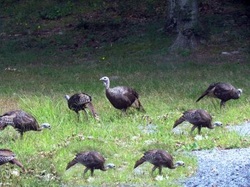 _As I opened the front windows of the coach this morning we found a “Turkey Farm” sitting in front of us. Wild turkeys that is… Two groups totaling 13. I stepped out of the coach to take a picture and it didn’t seem to bother them at all, I guess they aren’t as “Wild” as I thought. The Elks Club sits on 8 acres and borders up against a 50 acre state park so I guess the turkeys have a lot of human contact and feel safe as long as they aren’t carrying a shot gun. Breakfast finished we head out for another adventure. Well “adventure” might be a little strong but we did take a morning to visit the Saugus Iron Works, which is being taken care of by the National Park Service. 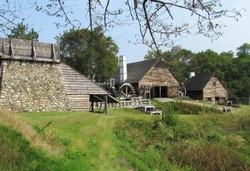 _The Saugus Iron Works was built 16 years after the Puritans settled in Boston. They built this impressive, large manufacturing complex at the time when there were only a dozen or so in Europe. This facility was powered by 7 large waterwheels, some of which were rigged to work in tandem with huge wooden gears connecting them. 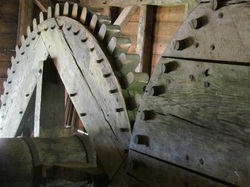 _A wharf was built on the Saugus River after the river was diverted and made larger to handle the requirements of the “Works”. 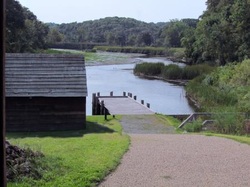 _The iron was to be loaded onto ocean-going vessels and shipped up and down the eastern coast and all the way to England. The original manufacturing site served as a training ground for skilled iron workers for what would become America’s iron and steel industry. The blast furnace, forge, 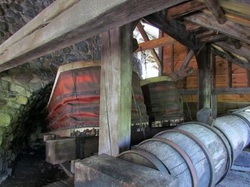 rolling and slitting mill, warehouse, and dock area were all reconstructed on original sites between 1948 and 1953 and that’s what we experienced during our visit. Attached to the visitors center sits the “Iron Works House”. 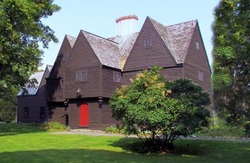 _This 1680’s mansion house, which was constructed about 10 years after the iron works CEASED production, is still standing on its original location. 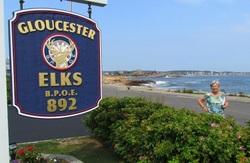 _From the very moment we pulled into the Elks here in Saugus, we were told about the Elks up the coast at Gloucester. Not only do they have a club that has one of the best views in Gloucester it has some of the best food at reasonable prices. Well we don’t want to say we didn’t get there so we drove out this afternoon for the best fish and chips I’ve ever had. We’ve stayed and visited at a large number of Elks clubs this journey and I’ve got to say that joining the club a year ago has been one of the best investments we’ve ever made. Not only for the RV parking that’s made available to us but also the wonderful HOSPITALITY. Today’s visit to Gloucester was no different. On our way to lunch at the Elks we drove by a sign that caught our interests…The Hammond Castle. 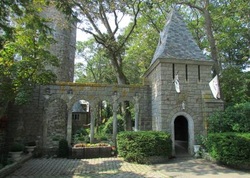 _Neither one of us had any information about the castle or the Hammonds so we were totally taken by what we saw and found. John Hays Hammond, Jr. is known as “The Father of the Remote Control” and one of America’s premier inventors with over 400 patents and ideas for 800 inventions that he has had his name associated with. All that Hammond accomplished his patents are still second only to Thomas Edison. Hammond built his medieval style castle between the years 1926 and 1929. 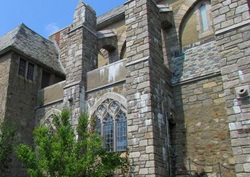 _This was to be his personal home and a backdrop for his interest and collection of Roman, medieval, and Renaissance artifacts. Even to this day and long after his death, the castle is used by hundreds who come every year for a Renaissance week. 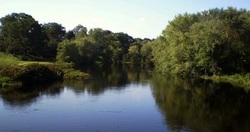 _Discontent had broken out between the British rule and the American colonies in 1775. On the 19th of April the British were commanded to march out from the Boston harbor and find all the guns and ammunition that they believed the colonists had hidden away in Lexington and Concord. This is when the silversmith Paul Revere and William Dawes started out from opposite sides of the British compound and rode out to warn the colonies that the “British are coming”… Well today Louise and I drove the route that the British and the “riders” took and we made a day of living their history. Our first stop was at the visitor’s center in Lexington for the best introductory movie we’ve ever seen. It really set the moment for us as we were walking across the street to Lexington Common, the first place that the British and the Minute Men were to meet toe to toe… 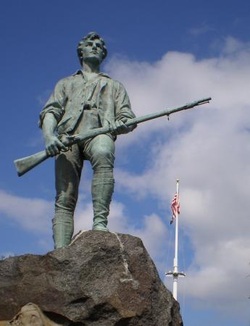 _It just happened that the Minute Men were in the Buckman Tavern 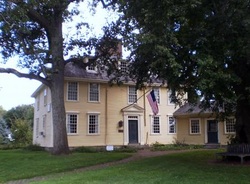 _as the sound of the British troops sounded from down the hill. 77 men then walked out to stand in the way of the 700 fully uniformed and armed British. The first shoot was fired and one patriots fell. No one knows for sure from what side the first shot was fired but there was no doubt that they know who won that first confrontation. From Lexington Common we followed the original “road” that the British troops marched in hopes of finding the arms of the militiamen and arresting the rabble-rousers Samuel Adams and John Hancock. This road was about 10-12’ wide and lined with a 3 foot rock wall on both sides. Today you can still find the rock walls running all the way from Lexington to Concord. Our next stop was at the location where Paul Revere was captured and Dawes and Prescott escaped to continue spreading the word. A few miles further up “the road”, we arrived at the bridge crossing the Concord River and the location where the largest Minutemen contingent brought the British to a halt. 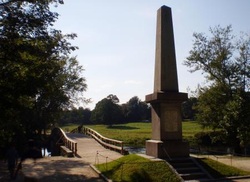 _At this point the British turned and started heading back to their compound with the Minute Men striking at them from all sides and all the way to the sea and the protection of their cannons. Along the same road we found this home with a beautiful covered front porch and a sign welcoming us to the “Wayside, Home of the Authors”. 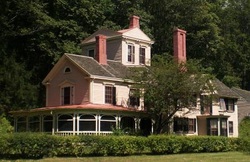 _The Wayside house has had some amazing families living there including THREE published families. This was the only home owned by Nathaniel Hawthorne, author of “The Scarlet Letter, The House of the Seven Gables, and Twice-Told Tales. Before Hawthorne bought it, the house belonged to Bronson Alcott, who renamed it “Hillside”. Here, Louisa May Alcott 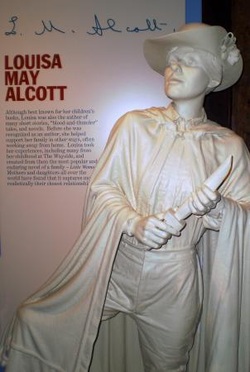 _and her sisters lived much of their childhood described in Little Women. Another author that lived in the Wayside was the children’s author Harriett Lothrup who used the pen name Margaret Sidney and wrote Five Little Peppers. |
*Locations*
All
*Archives*
November 2016
|
